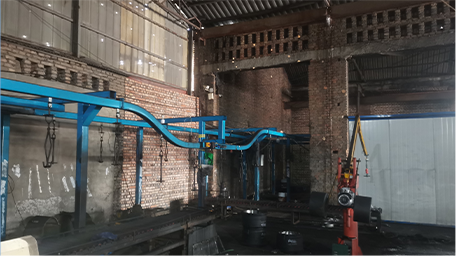Dec . 14, 2024 04:31 Back to list
how to remove rusted drum brakes
How to Remove Rusted Drum Brakes
When it comes to maintaining your vehicle, one of the often-overlooked components is the brake system. Over time, drum brakes can accumulate rust due to exposure to moisture, dirt, and neglect. Rust not only degrades the performance of your brakes but can also lead to more significant repairs if not addressed early. In this article, we will go through a step-by-step guide on how to remove rusted drum brakes safely and effectively.
Tools and Materials Needed
Before you start, ensure you have the following tools and materials - Jack and jack stands - Lug wrench - Screwdrivers (flathead and Phillips) - Breaker bar or ratchet with socket - Hammer - Rust penetrant lubricant (like WD-40) - Brake cleaner - Wire brush - Safety goggles and gloves
Step 1 Safety First
Before beginning any work on your vehicle, ensure you are in a well-ventilated area and have put on safety goggles and gloves. Safety is paramount when dealing with car repairs, especially when handling rusted parts that may be sharp or may break unexpectedly.
Step 2 Elevate the Vehicle
Use a car jack to lift the side of the vehicle where you will be working. Once elevated, place jack stands underneath the vehicle for extra support. Never work under a car that is only supported by a jack.
Step 3 Remove the Wheel
Using the lug wrench, loosen the lug nuts on the wheel associated with the drum brake. It’s easier to loosen them while the wheel is still on the ground. Once loose, completely remove the lug nuts and take off the wheel, exposing the drum brake assembly.
Step 4 Inspect the Drum Brakes
Before attempting to remove anything, take a moment to inspect the drum brakes for any additional damage or issues beyond just rust. This can include assessing the brake shoes, springs, and the drum itself.
Step 5 Apply Rust Penetrant
Spray a generous amount of rust penetrant lubricant on the drum and hardware where the brake drum connects to the backing plate. Allow it to sit for about 10-15 minutes, which will help loosen any rust that’s bonded the drum to the brakes.
how to remove rusted drum brakes

Step 6 Remove the Brake Drum
Using a hammer, gently tap around the outer edge of the brake drum. This action should help break the rust bond. If the drum is still stuck, make sure that any retaining screws have been removed and continue to tap gently. Avoid excessive force, as this can cause damage.
If the drum is still resistant, you can use a puller tool designed for this purpose, which can make removal easier and prevent damage to other components.
Step 7 Clean Rust and Debris
Once the drum is removed, inspect it, and the brake assembly for rust and debris. Use a wire brush to clean off rust from the drum and any other components. Follow up with brake cleaner to remove any residual brake dust and contaminants.
Step 8 Replace Components if Necessary
If you notice that the brake shoes or other components are significantly worn or rusted, this is a good time to replace them. Be sure to follow manufacturer guidelines for any replacements.
Step 9 Reassemble
After cleaning and inspecting, it’s time to reassemble the drum brake. Place the brake drum back in its original position, and securely fasten any retaining screws if present. Place the wheel back on, hand-tighten the lug nuts, and lower the car back to the ground.
Step 10 Final Check
Once the car is back on the ground, use the lug wrench to fully tighten the lug nuts in a star pattern for even distribution. Finally, give the brake assembly a once-over to ensure everything is fitted correctly.
Conclusion
Removing rusted drum brakes can be a challenging yet rewarding task. Regular maintenance and prompt attention to rust issues can prevent more significant problems down the line. If at any point you feel uncomfortable or unsure, don't hesitate to reach out to a professional mechanic. Proper brake function is crucial for your vehicle's safety, so taking the time to ensure that everything is in good working condition is essential. Happy repairing!
-
ROR Web Development: Build Fast, Scalable, Secure Apps
NewsAug.17,2025
-
Scania Brake Drums: OEM Quality for Optimal Safety & Durability
NewsAug.16,2025
-
R.V.I: Advanced Remote Visual Inspection for Precision
NewsAug.15,2025
-
Discover HYUNDA: Innovative Vehicles, Equipment & Solutions
NewsAug.14,2025
-
R.V.I: Unlock Advanced Insights & Real-time Performance
NewsAug.13,2025
-
Kamaz Brake Drum: Durable & Reliable for Heavy Duty Trucks
NewsAug.12,2025
